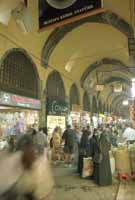
You can find just about any craft, or anything, really, if you wander around the Covered Market long enough. To wander all the halls takes hours.
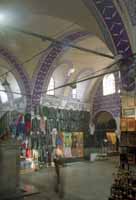
We saved the Covered Market for the end of our trip and picked up things we didn't see elsewhere.
Be prepared for the buskers. The best line we heard from a hawker: "Hey lady, can I help you spend your money?"
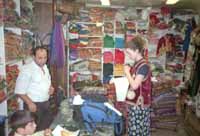
What, with Halloween right around the corner, we hit a gold mine!
There was more stuff crammed into this tiny shop than you could ever imagine.
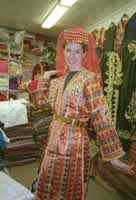
Cheap too. You can buy the real thing for less than you could rent some lame knock-off in the US.
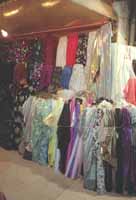
If it's loud, if it's bright, if it sparkles, if it's busy, and if it is just plain out there, you can probably find it here.
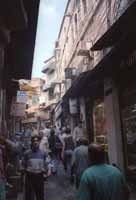
I found one section that sold nothing but buttons for clothing. Another section sold hardware. Yet another, plastic items.
Awesome.
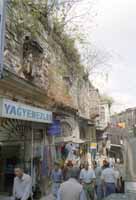
The plants growing out of the crumbling building are quite a trip.
Get twenty gallons of Round-Up, stat.
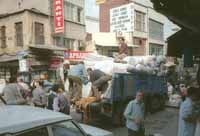
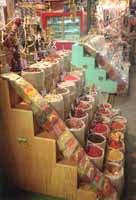
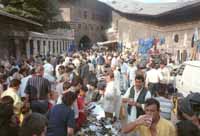
On certain days, however, huge areas are turned over to what seems to be a sanctioned market for a single item.
It was Back-To-School time in Turkey as we visited. This day the market was in clothes. Nothing but clothes, with a strong tilt towards school duds.
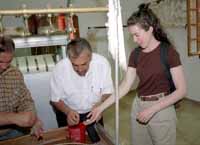
If you are on an organized tour, you will almost certainly be deposited at a carpet shop for an hour or so at one point or another. It is worth a look.
Of course, they will not show you their wares without impressing upon you how much effort and skill goes into making a hand-made Turkish carpet. Oh, no. You've got a whole education coming to you first!
Here two salesguys show Anne what the silk cocoons feel like after a soak in hot water. (Nasty, apparently.)
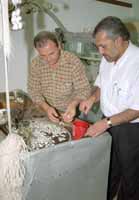
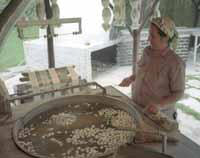
I doubt if many men are involved in carpet making after the cocoons are harvested. Male chauvinism pretty much rules the day in Turkey.
Carpet making really tides over many families in the rural areas. The women work on the carpet between other chores around the house. The larger and finer carpets can take about a year to finish, a little at a time. This supplements what might otherwise be subsistence agriculture.
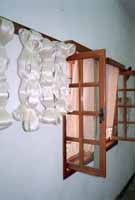
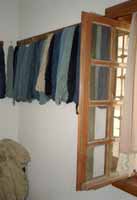
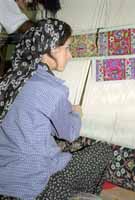
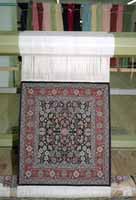
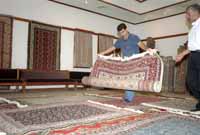
They are shown with a bit of flare: a quick unfurling, a snap, and...
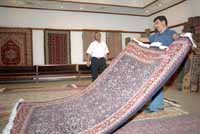
Now the pitch begins in earnest. Oh, yes, the pitching.
These guys aren't called carpet salesmen for nothing.
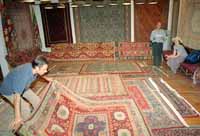
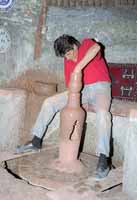
Of course, we started off with an education on the complexities and subtleties of making pottery. This guy is making a pot with a foot-turned pottery wheel.
We got to take a turn as well.
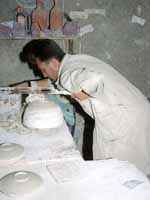
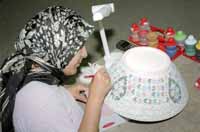
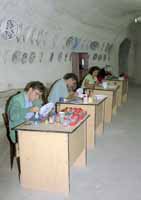
The novice painters paint large crude shapes on the cheap pieces. As the skill increases, the painting becomes finer, more complicated, and well, quite expensive.
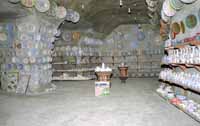
This whole factory was carved out of the soft Cappadocian rock. The result is similar in many ways to the Cave Cities scattered around the region.
The pottery was cool.
In Cappadocia, you can also see onyx knick-knacks being made, as well as Meerschaum ('sea foam') smoking pipes. It can all be just too much.
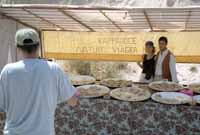
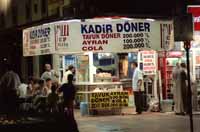
Don't tell a Greek or a Turk this, but their countries' traditional foods, drinks and booze are quite similar.
This stand is in Antalya's bazaar, just across from the clock tower. We didn't find all that much unique or compelling in this Bazaar.
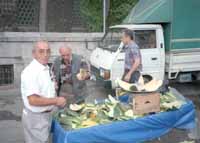
While these were nice guys, I'd re-read your travel medicine book before diving in.
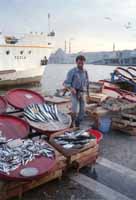
You can also see the Galata Bridge on the right and the New Mosque (Yeni Cami) behind the ship's bow on the southern shore of the Golden Horn.
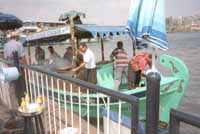
This boat is both a marine disaster and a culinary disaster just waiting to happen.
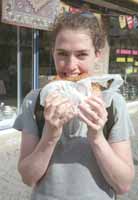
Every kid that came out of the store was munching on one of these rings.
Years later, we still think back to them. Most tasty.
If you know what these rings are called, or, better yet, know how to make them -- please drop me an email!
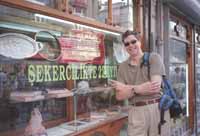
I like the name Turkish Delight, and the quaint old bakery, a heck of a lot more than the actual candy.
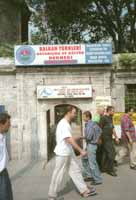
I ducked in and found this a dark and slightly forbidding place. I then, bravely, walked right out.
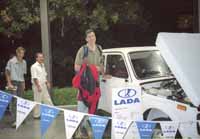
We wandered into an "industrial fair" in Izmir. We checked out factory machines, industrial paints, cars, and household items-a-plenty.